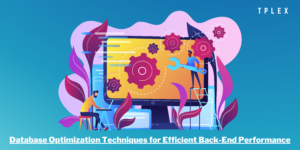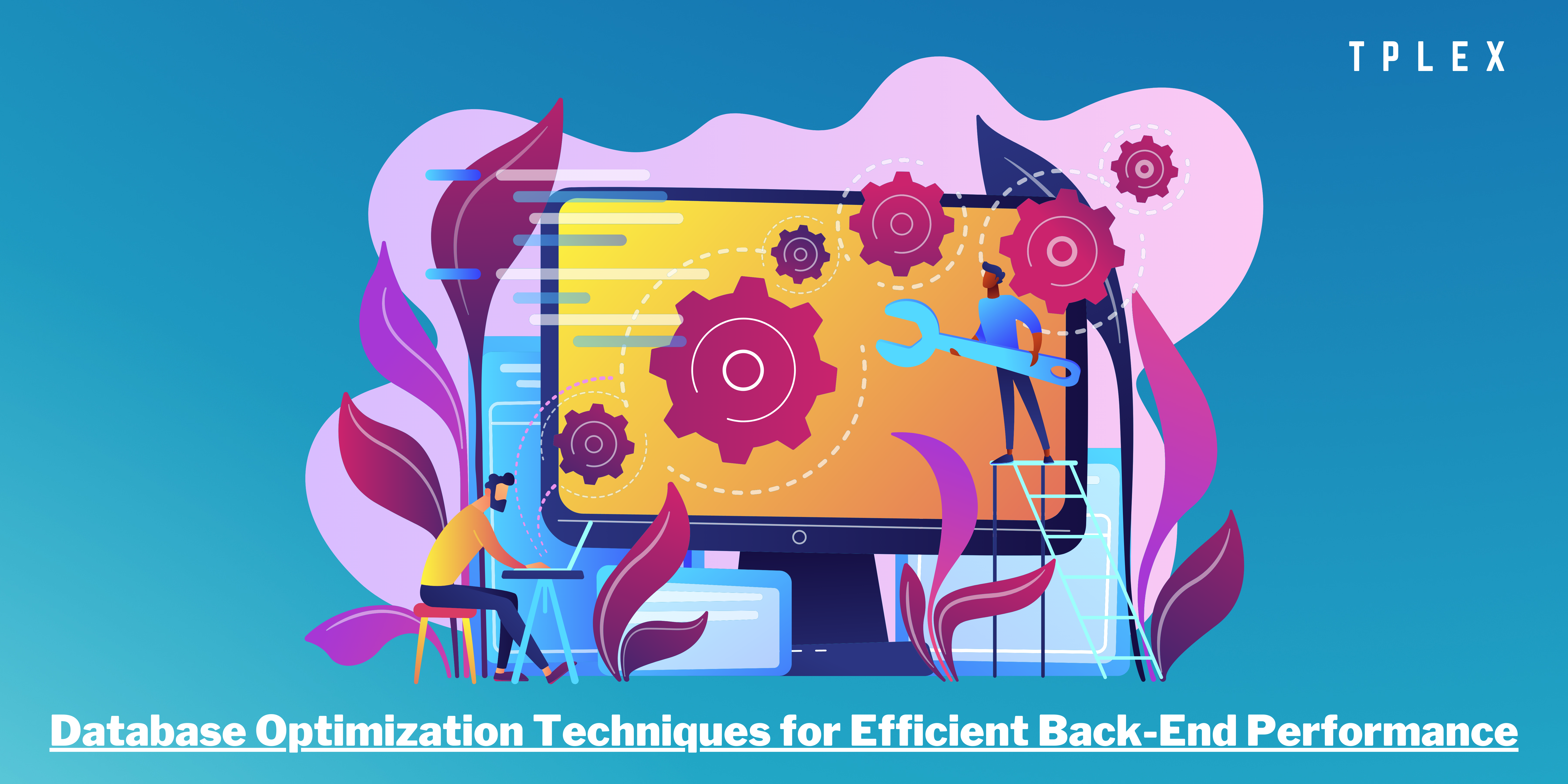Database Optimization Techniques for Efficient Back-End Performance
In the fast-paced digital world, where every millisecond counts, Back-End Development must ensure efficient and reliable performance for their web applications. A significant aspect of achieving this goal lies in optimizing the database, the backbone of any data-driven application.

This article will explore essential database optimization techniques to enhance back-end performance. Whether you’re a seasoned developer or a newcomer, these techniques will help you fine-tune your application’s database for maximum efficiency.
So, let’s dive in!
Indexing for Quick Data Retrieval
One of the fundamental techniques for improving database performance is through indexing. Indexes are data structures that speed up data retrieval by creating a reference map between the values in one or more columns of a database table and their corresponding physical locations.
Creating well-designed indexes on frequently queried columns can meaningfully reduce the time it takes to search for specific data, leading to faster response times.
However, avoid over-indexing, which can increase overhead during data insertion and updates. Regularly analyze query patterns and optimize your indexes to strike the right balance between read and write operations.
Data Normalization for Enhanced Efficiency
Data normalization is a process that helps eliminate data redundancy and inconsistency in a database. Organizing data into multiple related tables and reducing duplication can minimize storage space and improve data integrity.
Normalization ensures that each piece of data is stored in only one place, making updates and maintenance more manageable. Normalized databases also facilitate better query optimization, enabling the database engine to join tables efficiently and improve back-end performance.
Caching Mechanisms for Reduced Load
Caching is a method that stores frequently accessed data in memory, reducing the need to query the database for repetitive requests. You can significantly decrease database load and improve user response times by employing caching mechanisms, such as in-memory or external caching, with tools like Redis.
Remember to devise a proper cache expiration strategy to ensure users receive the most up-to-date information when necessary. When data needs frequent updates, consider combining caching strategies to balance performance and data accuracy.
Optimize Query Performance
Efficient database performance heavily relies on the queries executed on it. Ensure that your queries are well-optimized by following these best practices:
Use appropriate indexes: We’ve discussed indexing earlier, but it’s worth emphasizing its significance. Analyze query execution plans and use tools like the EXPLAIN statement in SQL to identify inefficient queries and create relevant indexes to improve performance.
Avoid using “SELECT *” in queries: Specify the required columns in your SELECT statement. Fetching only the necessary data reduces data transfer time and enhances query speed.
Use Joins Judiciously: While joins are essential for retrieving data from multiple tables, avoid excessive or nested joins as they can negatively impact performance. Ensure that the necessary columns are indexed to speed up join operations.
Limit Result Set Size: Employ techniques like pagination or limit clauses to control the number of records returned in a single query. Fetching an excessively large result set can burden the database and application, leading to sluggish performance.
Learn more about the benefits of IT staff augmentation services at https://tplex.com/benefits-of-it-staff-augmentation-services/
Vertical and Horizontal Partitioning
For applications handling vast amounts of data, consider partitioning your database. Vertical partitioning involves dividing a table into multiple smaller tables, each containing a subset of columns. This technique is suitable when certain columns are less frequently accessed than others, as it reduces the I/O and storage requirements for the database.
On the other hand, horizontal partitioning involves splitting a table into multiple smaller tables, each containing a subset of rows. This method is particularly useful for large tables that experience high volumes of data insertion and retrieval. Distributing the data across multiple partitions allows you to parallelize read and write operations, improving overall Back-End Development performance.
Empowering Your Digital Journey
TPLEX is a leading software outsourcing company committed to empowering businesses with exceptional tech talent and product development solutions. With a passion for innovation and a dedication to excellence, we partner with companies to deliver cutting-edge solutions that drive success in the digital landscape.
Conclusion
Optimizing the database is a critical step in ensuring efficient Back-End Development performance. By applying the techniques mentioned in this article, back-end developers can significantly enhance the responsiveness and reliability of their web applications.
Each technique is vital in reducing load times and increasing overall efficiency, from indexing and data normalization to caching and query optimization.
Remember, database optimization is an ongoing process, and it’s essential to monitor your application’s performance regularly.
Stay updated with the latest finest practices and tools to ensure your database continues to perform at its peak.
Happy optimizing!




